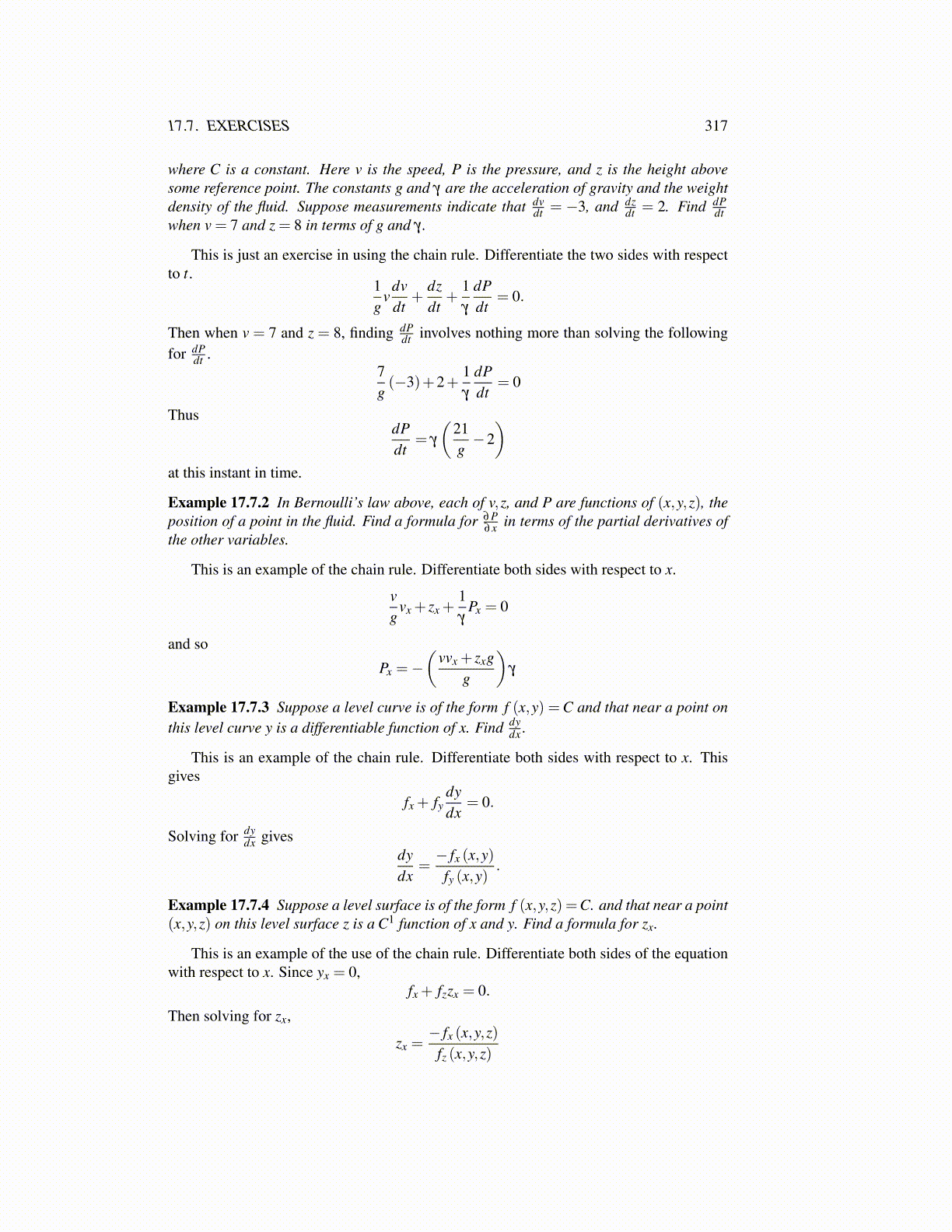
17.7. EXERCISES 317
where C is a constant. Here v is the speed, P is the pressure, and z is the height abovesome reference point. The constants g and γ are the acceleration of gravity and the weightdensity of the fluid. Suppose measurements indicate that dv
dt = −3, and dzdt = 2. Find dP
dtwhen v = 7 and z = 8 in terms of g and γ .
This is just an exercise in using the chain rule. Differentiate the two sides with respectto t.
1g
vdvdt
+dzdt
+1γ
dPdt
= 0.
Then when v = 7 and z = 8, finding dPdt involves nothing more than solving the following
for dPdt .
7g(−3)+2+
1γ
dPdt
= 0
ThusdPdt
= γ
(21g−2)
at this instant in time.
Example 17.7.2 In Bernoulli’s law above, each of v,z, and P are functions of (x,y,z), theposition of a point in the fluid. Find a formula for ∂P
∂x in terms of the partial derivatives ofthe other variables.
This is an example of the chain rule. Differentiate both sides with respect to x.
vg
vx + zx +1γ
Px = 0
and so
Px =−(
vvx + zxgg
)γ
Example 17.7.3 Suppose a level curve is of the form f (x,y) =C and that near a point onthis level curve y is a differentiable function of x. Find dy
dx .
This is an example of the chain rule. Differentiate both sides with respect to x. Thisgives
fx + fydydx
= 0.
Solving for dydx gives
dydx
=− fx (x,y)
fy (x,y).
Example 17.7.4 Suppose a level surface is of the form f (x,y,z) =C. and that near a point(x,y,z) on this level surface z is a C1 function of x and y. Find a formula for zx.
This is an example of the use of the chain rule. Differentiate both sides of the equationwith respect to x. Since yx = 0,
fx + fzzx = 0.
Then solving for zx,
zx =− fx (x,y,z)
fz (x,y,z)